- Destinations
- Travel Styles
- About Us
- Contacts
- Destinations
- Travel StylesTravel StylesBy ThemeBy Duration
- About UsOur Cutomer FeedbackGet Our BrochureFAQsTerms & Conditions
Traveling is about more than just visiting new places; it’s about exploring traditions and embracing new cultures. One of the most enjoyable ways to connect with a culture is through its food. In Vietnamese cuisine, spring rolls are one of the most iconic dishes, representing tradition, finesse, and the essence of local flavors. You’ve likely heard of Vietnamese spring rolls before, but what makes them so special?
To whet your appetite and inspire your next culinary adventure, let’s explore the history of Vietnamese spring rolls and learn an easy recipe to make at home. By the end of this article, you’ll be a spring roll expert!
Vietnam’s long history of foreign invasions has influenced many aspects of its culture, including its cuisine. Some historians believe that Vietnamese spring rolls may have been inspired by Chinese spring rolls, which share similar preparation techniques and fillings. Chinese rolls typically include cabbage, bean sprouts, and onions. Vietnamese spring rolls, however, incorporate a wider variety of ingredients such as vermicelli noodles, chopped vegetables, and minced pork, with some versions featuring shrimp or crab.
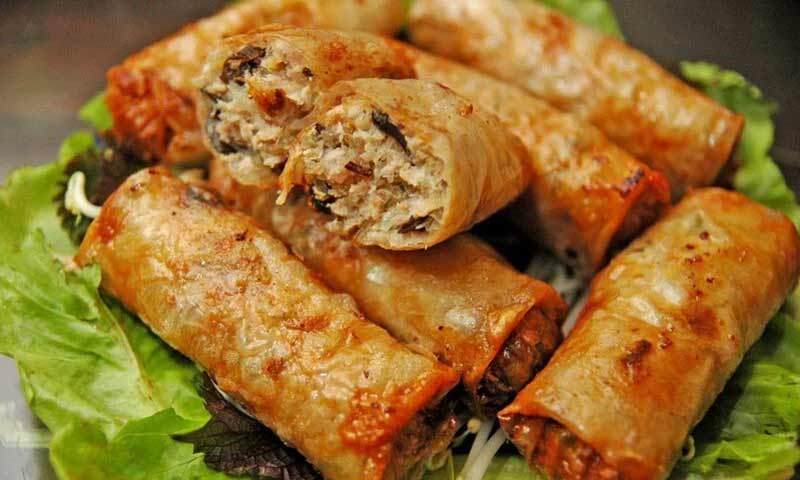
One of the distinctive elements of Vietnamese spring rolls is their serving style, paired with nuoc mam, a savory fish sauce, and fresh herbs like cilantro and mint. This combination sets Vietnamese spring rolls apart from their Chinese counterparts and gives them a unique flavor profile.
Spring rolls are enjoyed throughout Vietnam, though they are called by different names depending on the region. In northern Vietnam, they are known as nem rán; in the south Vietnam, they go by chả giò; and in central Vietnam, they are called chả ram. Despite the variation in names, the basic concept of a wrapped and fried dish remains the same.
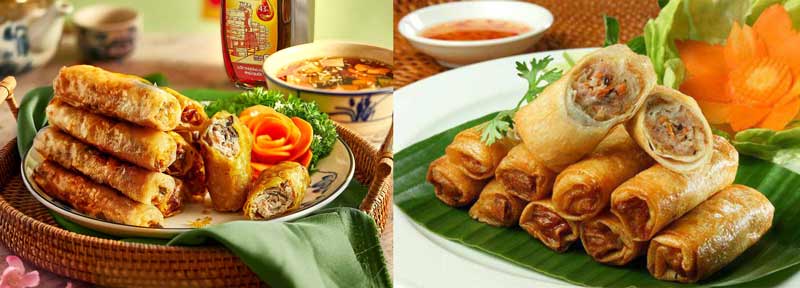
These crispy rolls have earned the nickname "the soul of Vietnamese cuisine" due to their widespread popularity. During the French colonial period in the 19th century, the French were so impressed by this dish that they called it “imperial rolls,” as it was once served to kings and nobles. Today, nem rán is a key part of festive meals, particularly during the Tet festival, which marks the Lunar New Year.
One of the most famous variations of spring rolls, nem rán, is believed to have originated in Saigon (now Ho Chi Minh City). According to Dương Văn Dư, a Hanoi businessman, nem rán, originally called chả giò, was introduced to the north in the 1920s by a woman named Tân.
She lived in Saigon with her French husband and, after his death, returned to Hanoi, where she opened a small restaurant serving chả giò. The locals began calling it "nem Sài Gòn", though it was eventually shortened to nem or nem rán.
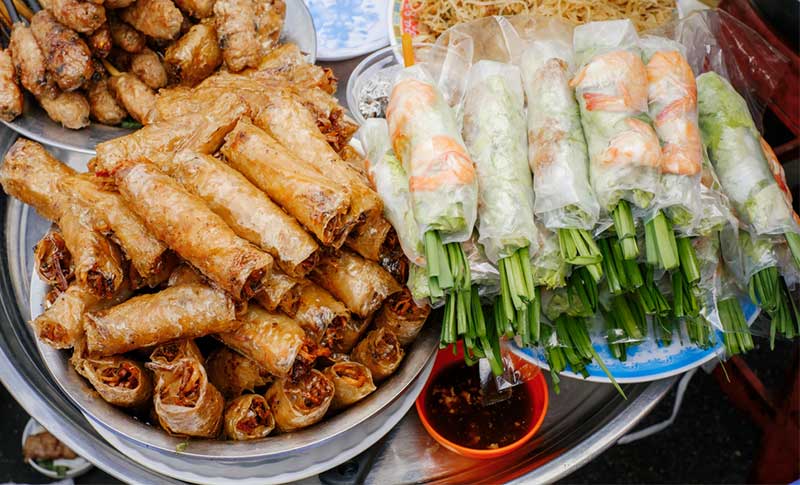
The word "nem" is thought to come from the term "nêm", meaning to wrap or roll tightly in Vietnamese, reflecting the way the dish is prepared. Nem rán quickly became a popular dish in Hanoi, with locals making their own adaptations to suit northern tastes.
>>>> 2-Week Itinerary with Beach Extension: Taste the Best of Vietnam 🍉🌊
While nem rán (or chả giò in the south) traditionally used ingredients like minced pork, jicama, and vermicelli wrapped in rice paper, the Hanoi version introduced new elements. For instance, Hanoi chefs replaced jicama with kohlrabi, used Bắc black pepper for added flavor, and served the rolls with a less sweet dipping sauce than their southern counterparts.
The northern version also favored frying the rolls in lard, which created a unique, richer texture.
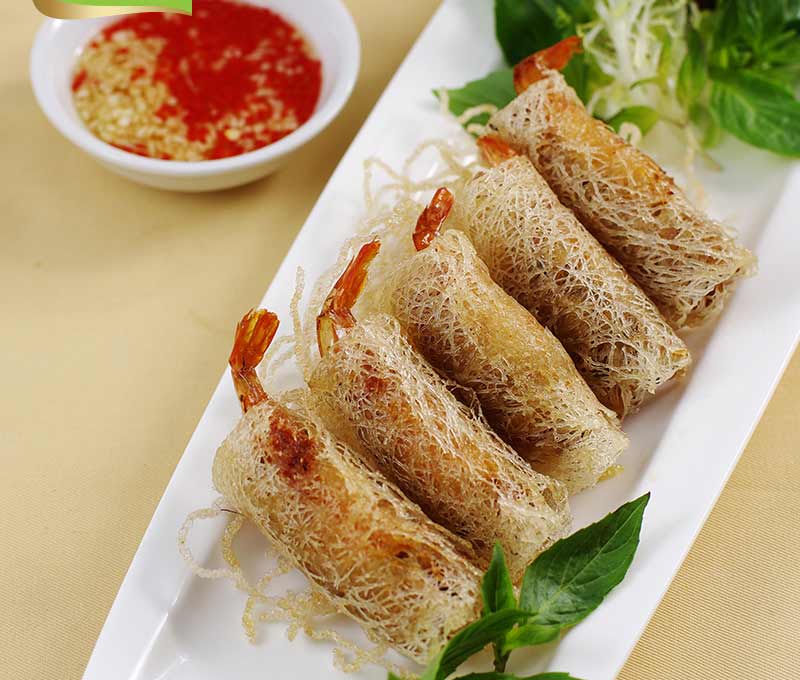
While spring rolls have different names and slight variations depending on the region, the core ingredients remain largely the same. What makes them truly special is the careful selection and preparation of each component. Traditional spring rolls often consist of minced pork, mushrooms, vermicelli noodles, finely chopped carrots, green onions, and eggs.
One popular variation is crab spring rolls (nem cua be), which are filled with crab meat for a more luxurious twist.
>>>> Savor Vietnam in 10 Days: A Culinary Journey Awaits 🍜🌟
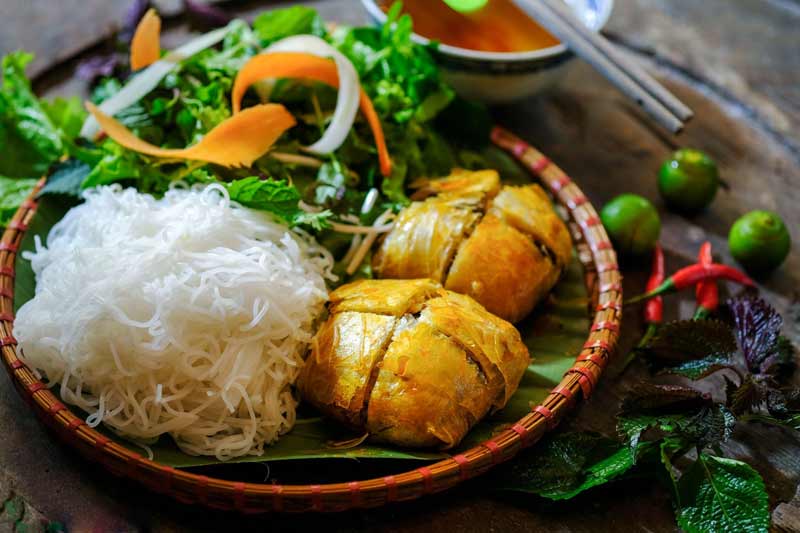
What sets Vietnamese spring rolls apart from other similar dishes is the balance of flavors and their symbolic connection to the concept of yin and yang. This ancient Chinese philosophy, which promotes balance and harmony, is evident in the way ingredients are chosen to create a well-rounded dish. Spring rolls are not only delicious but also nutritious, with a harmonious blend of savory, sweet, and fresh flavors.
>>> 12 Best Restaurants and Places to Enjoy Cuisine in Hanoi
After the ingredients are prepared, they are wrapped in nem rice paper and fried until golden brown. Making these rice cakes is an art form in itself.
Rice is ground into a white liquid, spread by hand into thin layers on the lid of a boiling pot, and steamed until firm. These delicate sheets are then dried in the sun before being softened again for rolling. Once fried, the rice paper becomes beautifully crispy with a golden texture.
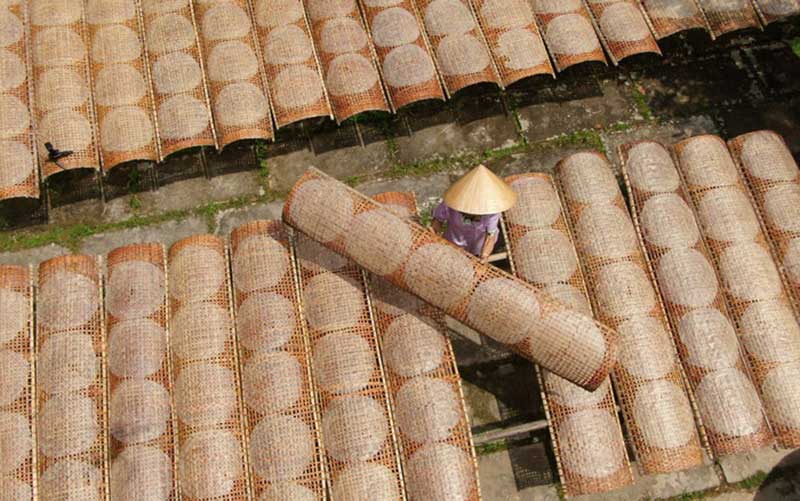
But no spring roll is complete without nuoc mam, a dipping sauce that brings together sugar, salt, lime juice or vinegar, and fish sauce. Fresh chili, garlic, and pepper are added to taste, creating a sauce that perfectly complements the richness of the fried rolls and cuts through their greasiness.
Spring rolls are commonly served with fresh herbs such as coriander and lettuce, which add a refreshing balance to the rich filling. While spring rolls can be enjoyed any day, they are especially popular during family gatherings, parties, and holidays like Tet.
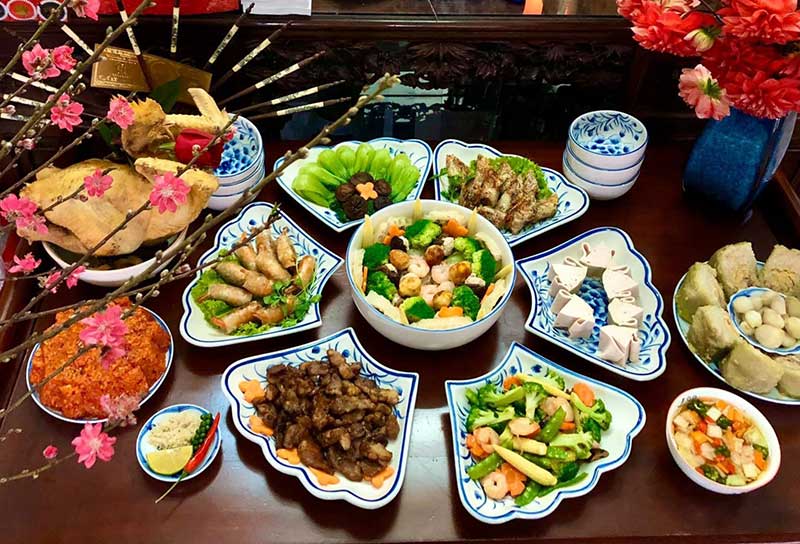
Now that you know a bit about the history and cultural significance of Vietnamese spring rolls, it’s time to try making them yourself! If you’re a fan of Vietnamese cuisine, you might want to take a cooking class with local chefs on your next trip to Vietnam. But for now, here’s an easy recipe you can try at home.
>>> One day in Hanoi: your COMPLETE guide (prices, tips & itineraries)
Prepare the Ingredients:
Mix the Filling: In a large bowl, combine the pork, mushrooms, vermicelli, and eggs. Season with fish sauce, salt, sugar, and pepper. Let the mixture rest for 15 minutes to enhance the flavors.
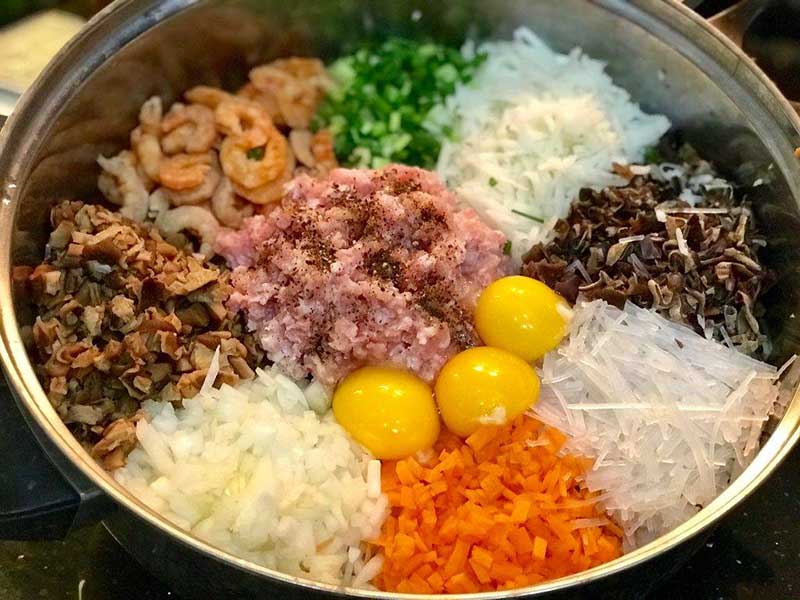
Roll the Spring Rolls: Moisten a sheet of rice paper with water or vinegar to soften it. Place a spoonful of the filling in the center and roll it up tightly, folding in the sides as you go. Be careful, as the rice paper can tear if handled too roughly.
Fry the Spring Rolls: Heat oil in a pan. Once the oil is hot, fry the rolls, turning them occasionally to ensure even cooking. When the rolls turn golden brown and release a fragrant aroma, remove them from the oil and drain on paper towels to absorb excess oil.
Make the Sauce: Mix sugar, white rice vinegar, lemon juice, fish sauce, and hot water in a bowl. Add minced garlic and chili to taste. The sauce should be a balanced combination of salty, sweet, and slightly acidic flavors.
Serve: Arrange the spring rolls on a platter with fresh herbs and lettuce. Dip each roll into the sauce for the perfect bite.
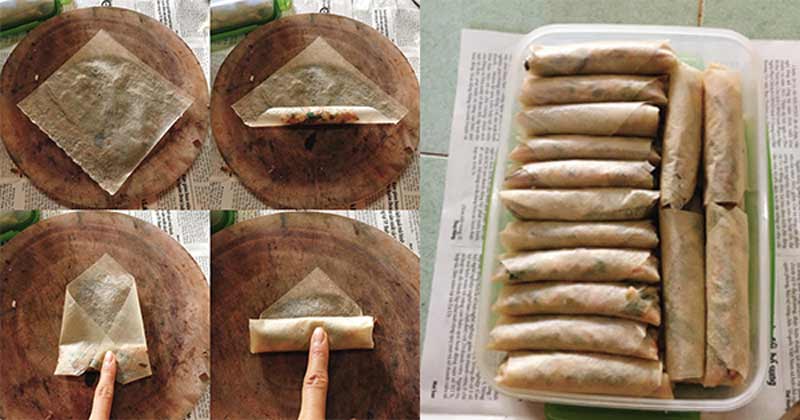
Vietnamese spring rolls are more than just a dish - they are a delicious symbol of Vietnam’s rich culinary tradition. Whether you’re enjoying them during a special occasion or preparing them at home, these crispy delights offer a perfect balance of flavors and textures that reflect the country’s unique culture and philosophy.
So, are you ready to take your taste buds on a journey? Try this recipe at home and savor a piece of Vietnam!
>>> See more about things to do in Vietnam by month:
JANUARY | FEBRUARY | MARCH | APRIL | MAY | JUNE | JULY | AUGUST | SEPTEMBER | OCTOBER | NOVEMBER | DECEMBER
>>>> Discover Vietnam food with us:



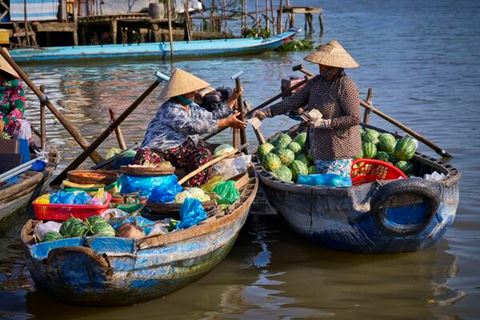 Vietnam Family Tours
Vietnam Family Tours Cultural and Heritage
Cultural and Heritage Classic and relaxation
Classic and relaxation Off The Beaten Track Tours
Off The Beaten Track Tours